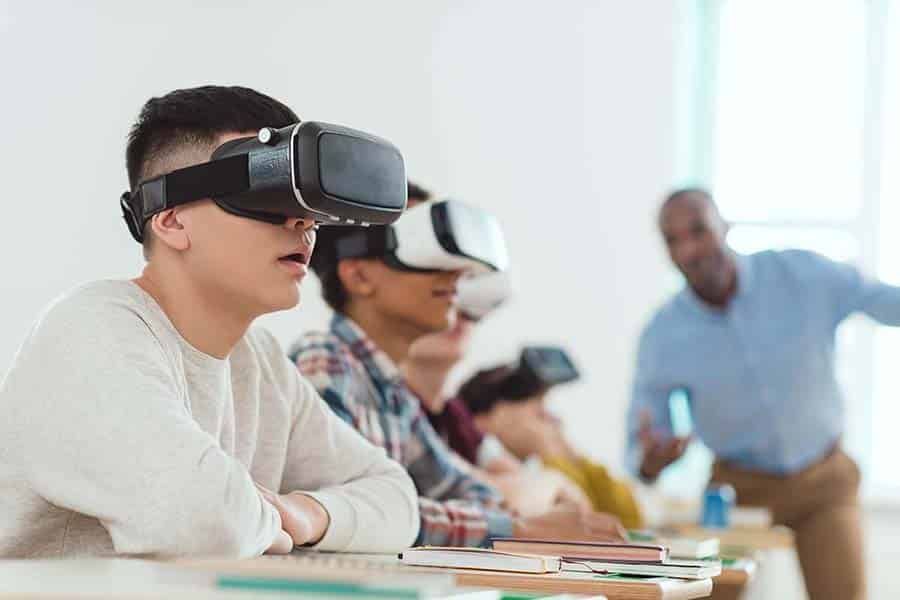The intersection of technology and environmental awareness has given rise to a powerful tool for education and engagement: virtual reality (VR). With its immersive experiences and interactive nature, VR technology has the potential to revolutionize the way we learn about and care for the environment. In this article, we explore the role of virtual reality in environmental awareness games and its impact on shaping a more sustainable future.
1. Enhancing Education through Immersion
Traditional methods of teaching about the environment often fail to create a deep emotional connection between individuals and the natural world. Virtual reality bridges this gap by transporting users into virtual environments that simulate real-world ecosystems. Through visually stunning and interactive experiences, VR engages users’ senses and facilitates a profound sense of immersion.
For example, imagine exploring the depths of the ocean and witnessing the vibrant marine life up close. With VR, individuals can witness the impacts of pollution, coral bleaching, and overfishing firsthand. This level of immersion fosters empathy and a greater understanding of the consequences of human actions on the environment.
2. Fostering Empathy and Emotional Connection
Environmental awareness games powered by virtual reality offer a unique opportunity to develop empathy and emotional connection to environmental issues. By placing users in virtual scenarios, these games allow individuals to experience the consequences of their decisions and actions. Whether it’s deforestation, climate change, or endangered species, VR can help individuals understand the urgency and gravity of the challenges we face.
Through realistic simulations and interactive storytelling, virtual reality elicits emotional responses that drive action and inspire change. This emotional connection is crucial for motivating people to make sustainable choices in their daily lives and advocate for environmental preservation on a larger scale.
3. Encouraging Active Participation
Traditional education methods often rely on passive learning, where individuals receive information without actively engaging with it. In contrast, virtual reality transforms education into an active and participatory experience. By enabling users to manipulate their virtual environment, VR empowers them to make decisions and witness the immediate consequences.
Environmental awareness games in virtual reality can challenge users to solve environmental problems or make sustainable choices in a fun and interactive way. Whether it’s planting trees, reducing carbon emissions, or managing resources, users become active participants in the virtual world, reinforcing knowledge and promoting behavioral change.
4. Inspiring Collaboration and Collective Action
One of the most powerful aspects of virtual reality environmental awareness games is their potential to bring people together. VR platforms allow for multiplayer experiences, where individuals from different locations can join forces and work towards a common goal.
These games can foster a sense of community, encouraging players to share strategies, discuss environmental issues, and collaborate on finding solutions. By connecting individuals worldwide in a virtual space, VR has the power to ignite collective action and mobilize a global movement for environmental preservation.
“Virtual reality presents an incredible opportunity to accelerate environmental awareness and inspire behavioral change. By leveraging immersive experiences, emotional connections, and active participation, VR can empower individuals to become environmental stewards and shape a sustainable future for all.”
Virtual reality is not just a technology; it is an enabler of transformation. As environmental challenges continue to escalate, it is imperative that we leverage every tool at our disposal. With virtual reality, we have the ability to educate, engage, and empower individuals in ways previously unimaginable. The combination of technology and environmental awareness can drive real change and ensure a healthier planet for future generations.
Conclusion
Virtual reality has emerged as a groundbreaking tool for increasing environmental awareness. Its immersive nature, ability to foster empathy and emotional connection, encourage active participation, and inspire collaboration make it an ideal platform for educating individuals about the importance of environmental conservation. By integrating virtual reality into environmental awareness games, we unlock the potential to create a more sustainable future through increased knowledge, inspired action, and collective engagement.
